Germany
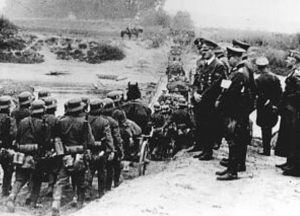 While Germany was not able to bring home the victory in World War II, they were a formidable enemy early in the war. On April 9, 1940, Nazi Germany launched an invasion into Norway. The initial attack was successful, and the Nazis captured several strategic points on the Norwegian coast. Hitler didn’t care that Norway had declared neutrality at the outbreak of World War II. Hitler wanted to rule the world and Norway was part of what he wanted.
While Germany was not able to bring home the victory in World War II, they were a formidable enemy early in the war. On April 9, 1940, Nazi Germany launched an invasion into Norway. The initial attack was successful, and the Nazis captured several strategic points on the Norwegian coast. Hitler didn’t care that Norway had declared neutrality at the outbreak of World War II. Hitler wanted to rule the world and Norway was part of what he wanted.
During the preliminary phase of the invasion, Norwegian fascist forces under Vidkun Quisling acted as a so-called “fifth column” for the German invaders, seizing Norway’s nerve centers, spreading false rumors, and occupying military bases and other locations. They were the invaders from within.  Quisling agreed with Hitler concerning the “Jewish problem” and became the leader of Norway during the Nazi occupation. Prior to that Quisling served as the Norwegian minister of defense from 1931 to 1933, and in 1934 he left the ruling party to establish the Nasjonal Samling, or National Unity Party, which was an imitation of Adolf Hitler’s Nazi Party.
Quisling agreed with Hitler concerning the “Jewish problem” and became the leader of Norway during the Nazi occupation. Prior to that Quisling served as the Norwegian minister of defense from 1931 to 1933, and in 1934 he left the ruling party to establish the Nasjonal Samling, or National Unity Party, which was an imitation of Adolf Hitler’s Nazi Party.
Norway’s declaration of neutrality didn’t do them much good when their own minister of defense was a traitor. Norway’s declared neutrality at the outbreak of World War II, was simply a small stumbling block in the plan Nazi Germany had. Hitler regarded the occupation of Norway a strategic and economic necessity. In the spring of 1940, Vidkun Quisling met with Nazi command in Berlin to plan the German conquest of his country. The Norwegian people have no warning on April 9th, when the combined German forces attacked, and by June 10th Hitler had conquered Norway and driven all Allied forces from the country.
Being the head of the only political party permitted by the Nazis didn’t do Quisling 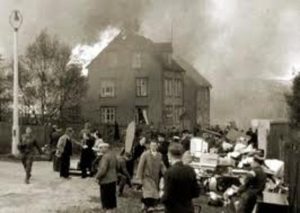 any good either. The people hated him, and opposition to him in Norway was so great that he couldn’t formally establish his puppet government in Oslo until February 1942. Nevertheless, the regime he set up under the authority of his Nazi commissioner, Josef Terboven, was a repressive regime that was merciless toward those who defied it. There was not peace for either side in those years. Norway’s resistance movement soon became the most effective in all Nazi-occupied Europe, and Quisling’s authority rapidly failed. After the German surrender in May 1945, Quisling was arrested, convicted of high treason, and shot. He was so hated that from his name comes the word quisling, meaning “traitor” in several languages.
any good either. The people hated him, and opposition to him in Norway was so great that he couldn’t formally establish his puppet government in Oslo until February 1942. Nevertheless, the regime he set up under the authority of his Nazi commissioner, Josef Terboven, was a repressive regime that was merciless toward those who defied it. There was not peace for either side in those years. Norway’s resistance movement soon became the most effective in all Nazi-occupied Europe, and Quisling’s authority rapidly failed. After the German surrender in May 1945, Quisling was arrested, convicted of high treason, and shot. He was so hated that from his name comes the word quisling, meaning “traitor” in several languages.
 World War II was one time when the United States and Germany were absolutely not friends. The Nazi beliefs and the American beliefs were worlds apart. Nevertheless, not all Germans were Nazis, and hard to believe as that may be, it was true. Never was that more evident that at Castle Itter, a small fortification in Austria used by the SS during World War II as a prison for high profile detainees. On May 6, 1945, with the Third Reich collapsing against the Allied attacks, the German commander of Dachau, Wilhelm Weiter committed suicide. At that point, some of the Waffen SS soldiers retreated, and amid the chaos that followed, the opportunity presented itself, and a Yugoslav freedom fighter, Zvonimir Cuckovic, who was a prisoner at Dachau, escaped and went looking for some Allied troops to rescue the rest of the prisoners.
World War II was one time when the United States and Germany were absolutely not friends. The Nazi beliefs and the American beliefs were worlds apart. Nevertheless, not all Germans were Nazis, and hard to believe as that may be, it was true. Never was that more evident that at Castle Itter, a small fortification in Austria used by the SS during World War II as a prison for high profile detainees. On May 6, 1945, with the Third Reich collapsing against the Allied attacks, the German commander of Dachau, Wilhelm Weiter committed suicide. At that point, some of the Waffen SS soldiers retreated, and amid the chaos that followed, the opportunity presented itself, and a Yugoslav freedom fighter, Zvonimir Cuckovic, who was a prisoner at Dachau, escaped and went looking for some Allied troops to rescue the rest of the prisoners.
Hans Fuchs, who was a young student going to school nearby, remembers how Itter Castle was converted into a prison by the Nazis in 1943. He said, “We saw everything from our school window, a double barbed-wire fence…and floodlights so that the whole night was lit up like day.” Itter Castle, is an old castle, dating back to the Middle Ages. It was turned into a sub-unit of the Dachau concentration camp, and used for VIP prisoners, prominent politicians, and military figures that the Nazis wanted to use as bargaining chips. Famous prisoners 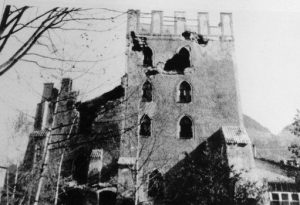 there included two former prime ministers of France, Edouard Daladier and Paul Reynaud, as well as the elder sister of Gen Charles de Gaulle, Marie-Agnes Cailliau.
there included two former prime ministers of France, Edouard Daladier and Paul Reynaud, as well as the elder sister of Gen Charles de Gaulle, Marie-Agnes Cailliau.
Cuckovic’s escape triggered one of the most curious battles of the conflict, but not in the way you might think. After he escaped, Cuckovic found an American armored column and got them to come with him. At the same time a Major Josef Gangl, who was an Austrian in the German Army, and had been collaborating with Austrian resistance in the closing days of the war, also intended to free the castle prisoners, but had decided instead to surrender with his men to the Americans. Gangl hated what was going on and knew that the Nazis were friends to no one. He could no longer stomach what he had been commanded to do. With the arrival of Cuckovic a hasty agreement took place. The major and his Wehrmacht troops would fight alongside the Americans against the SS guards.
The resulting battle of Castle Itter was not a major battle, just an amazing one. The SS faced not only their own countrymen and Americans, complete with a Sherman tank, but there were also Austrian partisans and French prisoners joining in. It was a wonderful show of the unifying effect the Allies had compared to the polarizing effect of the Nazis. The ensuing battle was not big, and in fact, a maximum of just 100 men were 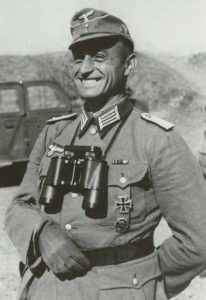 involved. Nevertheless, this battle was, without a doubt, vicious. The Sherman tank was destroyed and Major Josef Gangl was killed by a sniper. The thing that made this battle so unique, however, was that it was the only time the American army fought alongside the German army in all of World War II. The SS were handily defeated and quickly surrendered. The rest of the prisoners held at Castle Itter were released unharmed.
involved. Nevertheless, this battle was, without a doubt, vicious. The Sherman tank was destroyed and Major Josef Gangl was killed by a sniper. The thing that made this battle so unique, however, was that it was the only time the American army fought alongside the German army in all of World War II. The SS were handily defeated and quickly surrendered. The rest of the prisoners held at Castle Itter were released unharmed.
There have been times in many wars, when two soldiers made the conscious decision not to engage in battle, allowing both to live to fight another day. I suppose it would not be unheard of to have two opposing soldiers work together to defeat a common enemy, like maybe a bear or other wild animal, but for two army patrols of two opposing sides, to join forces against part of one sides army, is…well, unheard of. The battle at Castle Itter was just such a battle, and it is believed to be the only battle in the war in which Americans and Germans fought as allies.
 World War II was finally winding down. Germany had surrendered. Japan was still a problem, but they were losing their strength too. Hitler committed suicide on April 30, and now it was over for Germany. I fact, it was time for celebration. So on May 8, 1945, both Great Britain and the United States celebrated Victory in Europe Day. The day would come to be known as V-E Day, and cities in both nations, as well as formerly occupied cities in Western Europe, put out flags and banners, rejoicing in the defeat of the oppressive Nazi war machine.
World War II was finally winding down. Germany had surrendered. Japan was still a problem, but they were losing their strength too. Hitler committed suicide on April 30, and now it was over for Germany. I fact, it was time for celebration. So on May 8, 1945, both Great Britain and the United States celebrated Victory in Europe Day. The day would come to be known as V-E Day, and cities in both nations, as well as formerly occupied cities in Western Europe, put out flags and banners, rejoicing in the defeat of the oppressive Nazi war machine.
That was 75 years ago today that the first V-E Day was celebrated. It is hard to believe that it was 75 years ago. I wasn’t born then, of course, but over the years of researching World War II, I almost feel like those events were just yesterday. Researching World War II bought the events…good, bad, and horrific to life for me. Our men and women, as well as those of the Allies were brave and noble people. They were fighting against two oppressive regimes, both of whom had murdered their own people and the people of the nations around them. The Nazi war machine had marched through Europe, terrorizing the people around them. The Luftwaffe planes bombed many cities, taking no concern for the civilians lost. Life meant nothing to them…except for their own. Hitler was greedy for power, and wanted to bring Nazism to the whole world. Thankfully they were stopped before they could complete their reign of terror.
German troops throughout Europe finally laid down their arms on May 8, 1945 in Prague. The Soviets had lost 8,000 soldiers by the time of the surrender, but the Germans had lost considerably more. They laid down their arms too, in Copenhagen and Oslo, at Karlshorst, near Berlin, in northern Latvia, and on the Channel Island of Sark. The German surrender was almost complete in that final cease-fire. More surrender documents were signed in Berlin and in eastern Germany.
The main concern of many German soldiers was to elude the grasp of Soviet forces, to keep from being taken prisoner. About 1 million Germans attempted a mass exodus to the West when the fighting in Czechoslovakia ended, but were stopped by the Russians and taken captive. The Russians captured approximately 2 million 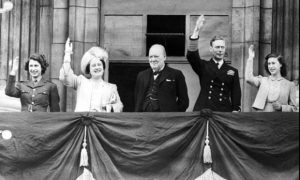 prisoners just before and after the German surrender. At the same time. 13,000 British soldiers were released and sent back to Great Britain. Of course, there were still pockets of confrontations into May 9th, and the Soviets lost an additional 600 soldiers in Silesia before the Germans finally surrendered. Those skirmishes pushed back the V-E Day celebration until the ninth in Moscow, with a radio broadcast salute from Stalin himself, “The age-long struggle of the Slav nations has ended in victory. Your courage has defeated the Nazis. The war is over.” It was a great day for all the people of the Allied nations, and the people of the world, with the exception of the Germans, Japanese, and the Axis nations. Good over evil.
prisoners just before and after the German surrender. At the same time. 13,000 British soldiers were released and sent back to Great Britain. Of course, there were still pockets of confrontations into May 9th, and the Soviets lost an additional 600 soldiers in Silesia before the Germans finally surrendered. Those skirmishes pushed back the V-E Day celebration until the ninth in Moscow, with a radio broadcast salute from Stalin himself, “The age-long struggle of the Slav nations has ended in victory. Your courage has defeated the Nazis. The war is over.” It was a great day for all the people of the Allied nations, and the people of the world, with the exception of the Germans, Japanese, and the Axis nations. Good over evil.
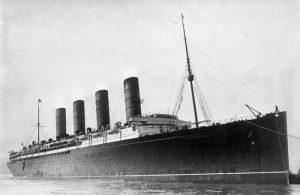 Most people have heard of the Titanic sinking, and how disaster could have been prevented, had they just slowed down, listened to the warnings, and had they had enough lifeboats. There is, however, another ship sinking that not so many people have heard of, or if they had, they didn’t pay much attention to. It is the Lusitania. Like the Titanic, the sinking of the Lusitania could have been prevented too, had a number of simple precautions been taken, such as not to sail at all that fateful May day in 1915.
Most people have heard of the Titanic sinking, and how disaster could have been prevented, had they just slowed down, listened to the warnings, and had they had enough lifeboats. There is, however, another ship sinking that not so many people have heard of, or if they had, they didn’t pay much attention to. It is the Lusitania. Like the Titanic, the sinking of the Lusitania could have been prevented too, had a number of simple precautions been taken, such as not to sail at all that fateful May day in 1915.
RMS Lusitania left New York for Britain on May 1, 1915, unfortunately during a time when German submarine warfare was intensifying in the Atlantic. On February 4, 1915, Germany had declared the seas around the United Kingdom a war zone, and the German embassy in the United States had placed newspaper advertisements warning people of the dangers of sailing on Lusitania. Not to defend the Germans, but they had warned people that they would attack all ships, military or passenger. Unfortunately, not many people boarding Lusitania that morning had time to read the paper before embarking on their journey. It amazes me that it was left to the people, who were told that the ship could outrun the German U-boats. They were also told that they 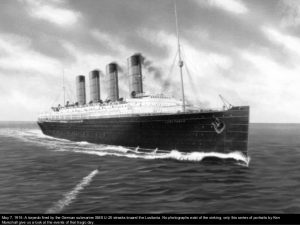 would have escort ships as they entered the war zone. And, they were told that the U-boats were not attacking neutral passenger liners. Unfortunately, these things were not factual. Part of the problem was that the Allies had begun disguising war ships as passenger ships on the assumption that the Germans would not attack passenger ships. Other passenger ships were actually used to transport soldiers and ammunition, or even just ammunition, in the thought that they would be safe from harm that way. The Allies were also supposed to have escort ships to take the passenger ships, but that did not happen in the case of the Lusitania.
would have escort ships as they entered the war zone. And, they were told that the U-boats were not attacking neutral passenger liners. Unfortunately, these things were not factual. Part of the problem was that the Allies had begun disguising war ships as passenger ships on the assumption that the Germans would not attack passenger ships. Other passenger ships were actually used to transport soldiers and ammunition, or even just ammunition, in the thought that they would be safe from harm that way. The Allies were also supposed to have escort ships to take the passenger ships, but that did not happen in the case of the Lusitania.
The sinking of the Cunard ocean liner RMS Lusitania occurred on Friday, May 7, 1915 during the First World War, as Germany waged submarine warfare against the United Kingdom which had implemented a naval blockade of Germany. The ship was identified and torpedoed by the German U-boat U-20 and sank in just 18 minutes, and also took on a heavy starboard list. The Lusitania went down 11 miles off the Old Head of Kinsale,  Ireland, killing 1,198 and leaving 761 survivors. The sinking turned public opinion in many countries against Germany, and it was a key element in the American entry into World War I. The torpedoing and subsequent sinking became an iconic symbol in military recruiting campaigns. The injustice of it brought about the outrage that would likely cause soldiers to enlist. Still, the United States did not immediately enter into the war. The American government first issued a severe protest to Germany…a waste of time really. Then, following immense pressure from the United States and recognizing the limited effectiveness of the policy, Germany abandoned unrestricted submarine warfare in September 1915.
Ireland, killing 1,198 and leaving 761 survivors. The sinking turned public opinion in many countries against Germany, and it was a key element in the American entry into World War I. The torpedoing and subsequent sinking became an iconic symbol in military recruiting campaigns. The injustice of it brought about the outrage that would likely cause soldiers to enlist. Still, the United States did not immediately enter into the war. The American government first issued a severe protest to Germany…a waste of time really. Then, following immense pressure from the United States and recognizing the limited effectiveness of the policy, Germany abandoned unrestricted submarine warfare in September 1915.
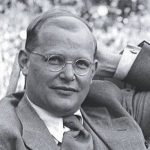 I think we have all thought that the German people were in agreement with the Nazis, but there were, in fact, many German people who fought hard for the other side. One such person who was active in the German resistance was Dietrich Bonhoeffer, who was a Protestant Lutheran Pastor and theologian. He hated Nazism and Hitler’s horrific ideas, and his strong hatred of these things brought him to a place of knowing that he had to do something…anything to stop the murderous regime.
I think we have all thought that the German people were in agreement with the Nazis, but there were, in fact, many German people who fought hard for the other side. One such person who was active in the German resistance was Dietrich Bonhoeffer, who was a Protestant Lutheran Pastor and theologian. He hated Nazism and Hitler’s horrific ideas, and his strong hatred of these things brought him to a place of knowing that he had to do something…anything to stop the murderous regime.
Bonhoeffer was born February 4, 1906 in Breslau, Germany. His family were not religious, but had a strong musical and artistic background. From his childhood days, Bonhoeffer displayed great musical talent, and the pursuit of music was important to him throughout his life. As he grew, I’m sure his family had great plans for his musical future…hoping for him to be a famous musician. When Bonhoeffer turned 14, he announced that he wanted to train and become a priest…a revelation that completely shocked his family.
Despite their displeasure at his announcement, Bonhoeffer attended the University of Berlin, graduating in 1927 with a doctorate in theology for his influential thesis, Sanctorum Communio, which means Communion of Saints. After his graduation, Bonhoeffer spent time in Spain and America. This was likely a good thing, because it gave him a wider outlook on life and helped him move from academic study to a more practical interpretation of the Gospels. He became quite interested in the concept of the Church’s involvement in social justice and protection of those who were oppressed. His wide travels also encouraged a greater interest in ecumenism, which is the outreach to other churches.
At the age of 25, Bonhoeffer was ordained as a priest. Because the early 30’s were a period of great upheaval in Germany, with the instability of Weimar Germany and the mass unemployment of the Great Depression leading to the election of Adolf Hitler in 1933. Hitler was elected as Chancellor in January 1933. He was very charismatic, and therefore, widely welcomed by most of the German people, including large parts of the church, but Bonhoeffer saw through the façade, and remained a firm opponent of Hitler’s philosophy.
Two days after Hitler’s election as Chancellor in Jan 1933, Bonhoeffer made a radio broadcast criticizing Hitler, and in particular the dangers of the idolatrous cult of the Fuhrer. The radio broadcast was almost immediately cut off. Apparently, Hitler already had a large amount of control of the information people received. Being an opponent of Hitler in those days was not looked upon favorably, and unfortunately, they did not have the freedom of speech that we enjoy in the United States.
Many people and even churches were fooled by Hitler, and before they realized it, they had lost the right to do anything about it. Bonhoeffer tried to organize the Protestant Church to reject the Nazi ideology, but they did not listen so he had to breakaway from the church where he was ordained. In April 1933, The Confessing Church which Bonhoeffer helped form with Martin Niemoller, was born. The Confessing Church sought to stand in contrast to the Nazi-supported, German Christian movement. Bonhoeffer felt disillusioned by the weakness of the church and opposition, and in the autumn of 1933, he took a two-year appointment to a German-speaking Protestant church in London.
After two years in London, Bonhoeffer returned to Berlin. He felt like he should be with his native country and  share in its struggles, even if it looked like there was no hope. Shortly after his return, one leader of the Confessing Church was arrested and another fled to Switzerland. Bonhoeffer’s authorization to teach revoked in 1936. He could not teach after being denounced as a pacifist and enemy of the state. Things grew steadily worse, and finally, because of his opposition to the Nazi regime, Bonhoeffer was arrested. He was “sentenced” to death and on April 9, 1945, was executed at the Flossian concentration camp. It was the last month of the war. He had almost survived. He remains an important symbol of opposition to Hitler, and his views on Christianity continue to be influential.
share in its struggles, even if it looked like there was no hope. Shortly after his return, one leader of the Confessing Church was arrested and another fled to Switzerland. Bonhoeffer’s authorization to teach revoked in 1936. He could not teach after being denounced as a pacifist and enemy of the state. Things grew steadily worse, and finally, because of his opposition to the Nazi regime, Bonhoeffer was arrested. He was “sentenced” to death and on April 9, 1945, was executed at the Flossian concentration camp. It was the last month of the war. He had almost survived. He remains an important symbol of opposition to Hitler, and his views on Christianity continue to be influential.
 Lyudmila Mikhailivna Pavlichenko was a Soviet sniper in the Red Army during World War II, credited with 309 confirmed kills. Her record made her the most successful female sniper in history. Lyudmila was nicknamed “Lady Death” due to her incredible ability with a sniper rifle and her high kill count. She served in the Red Army during the Siege of Odessa and the Siege of Sevastopol, during the early stages of the Eastern Front in World War II. Born Lyudmila Mikhailovna Belova on July 12, 1916 in Bila Tserkva, Russian Empire (located within present-day Ukraine). Her mother was a teacher and her father was a Saint Petersburg factory worker.
Lyudmila Mikhailivna Pavlichenko was a Soviet sniper in the Red Army during World War II, credited with 309 confirmed kills. Her record made her the most successful female sniper in history. Lyudmila was nicknamed “Lady Death” due to her incredible ability with a sniper rifle and her high kill count. She served in the Red Army during the Siege of Odessa and the Siege of Sevastopol, during the early stages of the Eastern Front in World War II. Born Lyudmila Mikhailovna Belova on July 12, 1916 in Bila Tserkva, Russian Empire (located within present-day Ukraine). Her mother was a teacher and her father was a Saint Petersburg factory worker.
In June 1941, when Pavlichenko was 24 years old and in her fourth year studying history at Kiev University, Germany began its invasion of the Soviet Union. Pavlichenko was among the first round of volunteers at the Odessa recruiting office, where she requested to join the infantry. The registrar really wanted her to be a nurse, but she refused. She surprised her superiors, and after they saw that she had completed multiple training courses, they finally let her in the army as a sniper. Pavlichenko was assigned to the Red Army’s 25th Rifle Division. She became one of 2,000 female snipers in the Red Army. The number sounds large, but female soldiers were still just 2% of the Red Army’s total number. Of the 2,000 female snipers, only about 500 survived the war. Pavlichenko was given only a frag grenade due to weapon shortages, although she was in a combat role. On August 8, 1941 a fallen comrade handed her his Mosin-Nagant model 1891 bolt-action rifle. She finally had a real weapon, and with it she achieved her first two kills and proved herself to her comrades. She described this event that made her officially a sniper, her “baptism of fire.”
Pavlichenko fought for about two and a half months near Odessa, where she recorded 187 kills. She was promoted to Senior Sergeant in August 1941, when she reached 100 confirmed kills. At age 25, she married a fellow sniper whose name was Alexei Kitsenko. Unfortunately, soon after the marriage, Alexei was gravely wounded by a mortar shell. He died from his injuries after a few days in the hospital. When the Romanians gained control of Odessa on October 15, 1941, Pavlichenko’s unit was withdrawn by sea to Sevastopol on the Crimean Peninsula, where she fought for more than eight months. In Sevastopol, Pavlichenko trained almost a dozen snipers, who killed over a hundred Axis soldiers during the battle. In May 1942, newly promoted Lieutenant Pavlichenko was cited by the Southern Army Council for killing 257 Axis soldiers. Her total of confirmed kills during World War II was 309, including 36 enemy snipers. In June 1942, Pavlichenko was hit in the face with shrapnel from a mortar shell. After her injury, the Soviet High Command ordered that she be evacuated from Sevastopol by submarine. They didn’t want to lose this valuable, perfect example of Soviet womanhood. She spent around a month in the hospital, after which she expected to go back to the Eastern Front , but she didn’t. Instead she became a propagandist for the Red Army. She also trained snipers for combat duty till the end of the war in 1945.
In 1942, Pavlichenko was sent to Canada and the United States for a publicity visit. Her mission was to convince the allies to start a second front against Nazi Germany. When she visited the United States, she became the first Soviet citizen to be received by a US President, as Franklin D. Roosevelt welcomed her to the White House, and later she toured with Eleanor Roosevelt across America, relating her experiences as a female soldier on the front lines. Unfortunately, Pavlichenko was not taken seriously by the press during her tour, but was referred to as the “Girl Sniper.” I can’t imagine how the press could possibly connect a sniper with girlish innocence. She was dumbfounded by the kind of questions reporters put to her in Washington, DC. “One reporter even criticized the length of the skirt of my uniform, saying that in America women wear shorter skirts and besides my uniform made me look fat.” They also asked if she used makeup on the front line. She was described by the reporters as very blunt and unemotional in her responses. Pavlichenko appeared before the International Student Assembly being held in Washington, DC, attended the meetings of the Congress of Industrial Organizations, and made appearances and speeches in New York City and Chicago. In New York City, she was given a raccoon fur coat by Mayor LaGuardia. In Chicago, she stood before large crowds, chiding the men to support the second front. “Gentlemen,” she said, “I am 25 years old and I have killed 309 fascist invaders by now. Don’t you think, gentlemen, that you have been hiding behind my back for too long?” Her words settled on the crowd, then caused a surging roar of support.
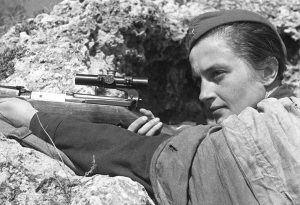 On Friday, November 12, 1942, Pavlichenko visited Coventry, accepting donations of £4,516 from local workers to pay for three X-ray units for the Red Army. She also visited Coventry Cathedral ruins, then the Alfred Herbert works and Standard Motor Factory, from where most funds had been raised. She had inspected a factory in Birmingham earlier in the day. Having attained the rank of major, Pavlichenko never returned to combat, but became an instructor and trained Soviet snipers until the war’s end. In 1943, she was awarded the Gold Star of the Hero of the Soviet Union, as well as the Order of Lenin twice. Lyudmilla Pavlichenko died on October 10, 1974, at the age of 58 years in Moscow, Soviet Union due to a stroke. She was a beloved hero of the Soviet Union.
On Friday, November 12, 1942, Pavlichenko visited Coventry, accepting donations of £4,516 from local workers to pay for three X-ray units for the Red Army. She also visited Coventry Cathedral ruins, then the Alfred Herbert works and Standard Motor Factory, from where most funds had been raised. She had inspected a factory in Birmingham earlier in the day. Having attained the rank of major, Pavlichenko never returned to combat, but became an instructor and trained Soviet snipers until the war’s end. In 1943, she was awarded the Gold Star of the Hero of the Soviet Union, as well as the Order of Lenin twice. Lyudmilla Pavlichenko died on October 10, 1974, at the age of 58 years in Moscow, Soviet Union due to a stroke. She was a beloved hero of the Soviet Union.
 I was thinking about Sir Nicholas Winton, who saved 669 Jewish children from the brutal activities, and almost certain death that was being dealt out by Hitler during World War II. Of course, Sir Winton wasn’t the only person who stepped up to help wage their own battle against the Third Reich. Many people in Nazi occupied areas took in families in desperate need. When word is the deportations to the ghettos came down, some parents had to make the horrible choice to give their children to friends and neighbors to “hide” them in plain site, raising them as their own, and everyone hoping to be able to return them to their own parents after the war. The problem was that so many of the parents were killed in the camps.
I was thinking about Sir Nicholas Winton, who saved 669 Jewish children from the brutal activities, and almost certain death that was being dealt out by Hitler during World War II. Of course, Sir Winton wasn’t the only person who stepped up to help wage their own battle against the Third Reich. Many people in Nazi occupied areas took in families in desperate need. When word is the deportations to the ghettos came down, some parents had to make the horrible choice to give their children to friends and neighbors to “hide” them in plain site, raising them as their own, and everyone hoping to be able to return them to their own parents after the war. The problem was that so many of the parents were killed in the camps.
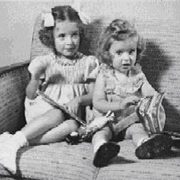
After the war was over, many of these children did not remember their parents. They were too young when they were given to people to care for. That created a new and almost more difficult situation. Some of the foster parents had fallen in love with the children in their care, and the viler knew no other family. Still, they were not their children. It was a heart wrenching situation. The other problem was that due to bombings, many of the homes housing these “hidden” children were gone, and they had no way to let anyone know where they had gone. That made it even more difficult to return the children. And some people couldn’t bear to part with the children anyway. 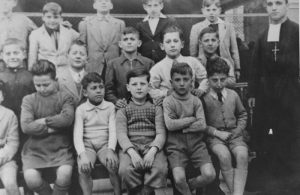 That left parents devastated and without recourse.
That left parents devastated and without recourse.
Some children were reunited with their parents quickly and some took years…if ever. I wonder about the ones that took years, because of the immense loss they must have felt over so much lost time. You just can’t get that time back, and you can’t change whatever the children endured in their lives. Everyone just had to let go of the past and go forward, as best they could. There was no way to go back to their pre-war lives. Each had changed, some were forever missing, and some were lost to the horrific hatred that was Hitler’s Third Reich.

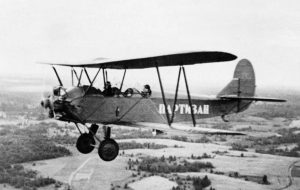 During and before World War II, and even after to a large degree, women were not allowed to hold combat positions, but the Soviets found that the enemy was fast encroaching on them, and there was no other choice. Using female bombardiers was even more undesirable, but Adolf Hitler had launched Operation Barbarossa, which was his massive invasion of the Soviet Union, in June 1941. By that autumn, the Germans were pressing on Moscow, Leningrad was under siege and the Red Army was struggling. The Soviets were desperate.
During and before World War II, and even after to a large degree, women were not allowed to hold combat positions, but the Soviets found that the enemy was fast encroaching on them, and there was no other choice. Using female bombardiers was even more undesirable, but Adolf Hitler had launched Operation Barbarossa, which was his massive invasion of the Soviet Union, in June 1941. By that autumn, the Germans were pressing on Moscow, Leningrad was under siege and the Red Army was struggling. The Soviets were desperate.
Marina Raskova, who was also known as the “Soviet Amelia Earhart,” had brainstormed the idea of a female squadron. She was famous not only as the first female navigator in the Soviet Air Force but also for her many long-distance flight records. Marina had been receiving letters from women all across the Soviet Union wanting to join the World War II war effort. Oh sure, they could go in as nurses, secretaries, or in some other support roles, but these women already knew how to fly. They had been training in air clubs all over the Soviet Union. They wanted to be gunners and pilots, flying on their own. Many of these women had lost brothers or boyfriends, and many had seen their homes and villages destroyed. Raskova petitioned Soviet dictator Joseph Stalin to let her form an all-female fighting squadron. Stalin wasn’t too keen on the idea, but it soon became apparent that they had no other choice.
On October 8, 1941, Stalin agreed to the plan and gave orders to deploy three all-female air force units. These women were going to be full-combat soldiers. They would not only fly missions and drop bombs, they would return fire too. With this action, the Soviet Union became the first nation to officially allow women to engage in combat. Previously, even women pilots could only help transfer planes and ammunition. Then, the men took over. Raskova quickly started to fill out her teams. She had more than 2,000 applications to choose from. She selected about 400 women for each of the three units. These were not long time pilots, but rather, most were students, ranging in age from 17 to 26. Those selected moved to Engels, a small town north of Stalingrad, to begin training at the Engels School of Aviation. The women underwent a highly compressed education, and were expected to learn in a few months what it took most soldiers several years to grasp. The only thing in their favor was that they already knew how to fly, just not in combat. Each recruit had to train and perform as pilots, navigators, maintenance and ground crew. Then the positions were assigned. The women faced skepticism from most of the male military personnel who believed they added no value to the combat effort, and called them “princesses.” Raskova did her best to prepare her women for these attitudes, but they still faced sexual harassment, long nights, and grueling conditions. “The men didn’t like the ‘little girls’ going to the front line. It was a man’s thing.” Assigned Polikarpov Po-2 biplanes, which was a bare-bones plywood biplane, the women flew under the cover of night. These light two-seater, open-cockpit planes were never meant for combat, and were often referred to as “a coffin with wings.” Made out of plywood with canvas pulled over, the aircraft offered virtually no protection from the elements. Flying at night, pilots endured freezing temperatures, wind, and frostbite. In the harsh Soviet winters, the planes became so cold, touching them caused skin to stick and rip off. They were given uniforms handed down from the men, and boots that were too big, and had to have the toes stuffed, so they would not slip.
In the air, they braved bullets and frostbite, while on the ground, they battled skepticism and sexual harassment. Nevertheless, in the air, they were so feared and hated by the Nazis that any German airman who downed one of these planes was automatically awarded the prestigious Iron Cross medal. All told, the unique all-female 588th Night Bomber Regiment dropped more than 23,000 tons of bombs on Nazi targets. And in doing so, they became a crucial Soviet asset in winning World War II. The Germans nicknamed them the Nachthexen, or “night witches,” because the whooshing noise their wooden planes made resembled that of a sweeping broom. “This sound was the only warning the Germans had. The planes were too small to show up on radar, or on infrared locators,” said Steve Prowse, author of the screenplay The Night Witches, a nonfiction account of the little-known female squadron. “They never used radios, so radio locators couldn’t pick them up either. They were basically ghosts.”
Due to both the planes’ limited weight capacity and the military’s limited funds, the female pilots didn’t have some of the basic necessities. Parachutes were deemed a “luxury” item. The added weight was just too much. They also didn’t have radar, guns, and radios. They were forced to use more rudimentary tools such as rulers, stopwatches, flashlights, pencils, maps, and compasses. Because these planes flew slower than the stall speed of the Nazi planes, they were very good at maneuvering out of the way of the German planes, making them hard to target. They also could easily take off and land from most locations. Still, there was a downside too. Whenever they did come under enemy fire, the pilots had to duck by sending their planes into dives, because most of them carried no defense ammunition. If they were hit by tracer bullets, which carry a pyrotechnic charge, the wooden planes would burst into flames, killing the crew.
One of the biggest drawbacks was that the Polikarpovs could only carry two bombs at a time…one under each wing. Two bombs per plane was not going to make much of a dent in the German targets, so the regiment sent out up to 40 two-person crews a night. Each would fly between 8 and 18 missions a night, returning to base to re-arm between runs. The weight of the bombs forced them to fly at lower altitudes, making them a much easier target, which is why they only flew missions at night. Each mission found the planes traveling in packs. The first planes were used as bait. Their job was to attract German spotlights, which provided the pack with much needed illumination. These bait-planes, rarely had ammunition to defend themselves. They would release a flare to light up the intended target. The last plane would idle its engines and glide in darkness to the bombing area. It was this “stealth mode” that created their signature witch’s broom sound. While these women were a formidable foe, they were also women. The Night Witches followed 12 commandments, the first of which was “be proud you are a woman.” They might be fierce killers of the Germans, but in their downtime they were still women. They did needlework, patchwork, decorated their planes and danced. They even put the pencils they used for navigation into double duty as eyeliner.
The last flight of the Night Witches took place on May 4, 1945…when they flew within 37 miles of Berlin. Three days later, Germany officially surrendered. According to Prowse, “the Germans had two theories about why these women were so successful: They were all criminals who were masters at stealing and had been sent to the front line as punishment, or they had been given special injections that allowed them to see in the night,” both of these “theories” make me laugh, like the female pilots couldn’t be just that…excellent fighter pilots in their own right. Altogether these capable, albeit “crazy” heroines flew more than 30,000 missions, or about 800 per pilot and navigator. They lost a total of 30 pilots, and 24 of the flyers were awarded the title Hero of the Soviet Union. Marina Raskova, who had spearheaded the movement, died on January 4, 1943, when her plane was shot down on a mission very near the front line. Hers was the very first state funeral of World War II and 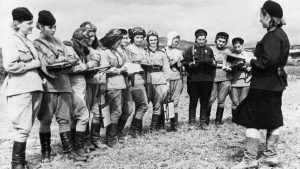
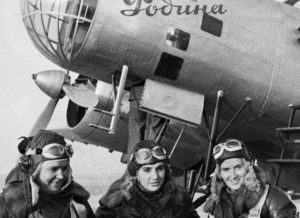 her ashes were buried in the Kremlin. The all-female 588th Night Bomber Regiment, despite being the most highly decorated unit in the Soviet Air Force during the World War II, was disbanded six months after the end of the war. When the big victory-day parade in Moscow was held, they weren’t included, because it was decided that their planes were too slow. Amazing!!!
her ashes were buried in the Kremlin. The all-female 588th Night Bomber Regiment, despite being the most highly decorated unit in the Soviet Air Force during the World War II, was disbanded six months after the end of the war. When the big victory-day parade in Moscow was held, they weren’t included, because it was decided that their planes were too slow. Amazing!!!
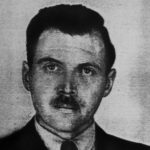
 Most people would not think that the things Dr Gisella Perl did at Auschwitz during the Holocaust were angelic in any way, but the prisoners there, the women whose lives she saved would say otherwise. To them, she was an angel of mercy…even if some of the things she had to do were so horrific that she tried to commit suicide after the war. Dr Perl was a successful Jewish gynecologist from Romania, where she lived with her husband and two children. Right before the Nazi soldiers stormed her home, she was able to hid her daughter with some non-Jews, but she, her husband, son, her elderly parents who captured and taken to Auschwitz. Once they arrived, Gisella was separated from her family. They would be sent to be slave labor or to be killed. She would never see any of them again. Because she was a doctor, she was to be used in a different way…a horrifically gruesome way. She was to work for Dr Joseph Mengele, to be at his beck and call, and the things he made her do nearly killed her. She was a doctor. She was supposed to save lives, not be involved in ending them…or worse, but that was the position he put her in.
Most people would not think that the things Dr Gisella Perl did at Auschwitz during the Holocaust were angelic in any way, but the prisoners there, the women whose lives she saved would say otherwise. To them, she was an angel of mercy…even if some of the things she had to do were so horrific that she tried to commit suicide after the war. Dr Perl was a successful Jewish gynecologist from Romania, where she lived with her husband and two children. Right before the Nazi soldiers stormed her home, she was able to hid her daughter with some non-Jews, but she, her husband, son, her elderly parents who captured and taken to Auschwitz. Once they arrived, Gisella was separated from her family. They would be sent to be slave labor or to be killed. She would never see any of them again. Because she was a doctor, she was to be used in a different way…a horrifically gruesome way. She was to work for Dr Joseph Mengele, to be at his beck and call, and the things he made her do nearly killed her. She was a doctor. She was supposed to save lives, not be involved in ending them…or worse, but that was the position he put her in.
First, he told her to round up any pregnant women. She thought she was going to be caring for these women, but after she turned over 50 women, and they were immediately sent to the gas chambers, a horrified Dr Perl made up her mind that somehow, she would do whatever she could to thwart the Nazis horrible plans. She had not understood what was goin to happen to the pregnant women she turned over, and the thought of her part in their loss of live, nearly killed her. The things she did after that first horrible mistake, might not seem to most people, including me, like the actions of an angel, but I can see that she had no real choices.
The women Dr Perl cared for had been treated horrible by the Nazi soldiers. Their wounds consisted of lashes from a whip on bare skin, to bites from dogs, to infections from the horribly unsanitary conditions. When she entered the room, the prisoners in the infirmary knew that she was there to help. That was the good part of her life at Auschwitz, but Dr Mengele was a cruel and evil man, and he was determined to kill any pregnant woman. This left Dr Perl with an extremely difficult decision to make. She could watch as the mother and baby were put to death, or she could abort the babies and give the mothers the chance to live to have a family later. The choice was unthinkable to her, but it was also a non-choice. She could lose one life or both. The abortions were performed in secret, often in darkness, and the women whose lives she saved…well, they were grateful, even 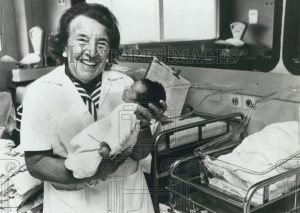
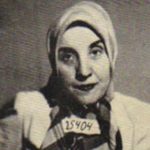 though they mourned their babies and never truly got over the decisions they and Dr Perl made. Later in life, after the war, Dr Perl went on to deliver many live babies, rejoicing over each. She was bold with God, telling him, when a baby seemed unlikely to make it, that God owed her this baby, because of those she could not save in the Holocaust. God honored her prayers, and gave her the healthy babies she requested of Him. I think He considered her the Angel of Auschwitz too.
though they mourned their babies and never truly got over the decisions they and Dr Perl made. Later in life, after the war, Dr Perl went on to deliver many live babies, rejoicing over each. She was bold with God, telling him, when a baby seemed unlikely to make it, that God owed her this baby, because of those she could not save in the Holocaust. God honored her prayers, and gave her the healthy babies she requested of Him. I think He considered her the Angel of Auschwitz too.
 It was a big move for a Milwaukee, Wisconsin girl, but in the end, it would be her undoing. Mildred Fish was born in Milwaukee in 1902, and upon her high school graduation, she studied and then taught English at UW-Madison. It was there that she met Arvid Harnack, a Rockefeller Fellow from Germany. They soon fell in love, and were married in 1926. Because she was a progressive woman and proud of her name, Mildred chose to hyphenate her name, and became known as Mildred Fish-Harnack.
It was a big move for a Milwaukee, Wisconsin girl, but in the end, it would be her undoing. Mildred Fish was born in Milwaukee in 1902, and upon her high school graduation, she studied and then taught English at UW-Madison. It was there that she met Arvid Harnack, a Rockefeller Fellow from Germany. They soon fell in love, and were married in 1926. Because she was a progressive woman and proud of her name, Mildred chose to hyphenate her name, and became known as Mildred Fish-Harnack.
A few years later, she and Arvid both moved to Germany, where she taught and also worked on her doctorate while he worked for the German government. It was during those years that Fish-Harnack became interested in the Soviet Union, where women could choose where to work and also had other rights that women in the United States did not have…a situation which would very soon sound absurd. Nevertheless, at that time, it was so. Throughout the 1930s, Mildred and Arvid, who became increasingly 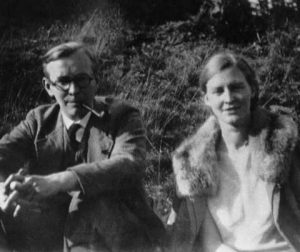 alarmed by Hitler’s rise to power, began to communicate with a close circle of associates who believed communism and the Soviet Union might be the only possible stumbling block to complete Nazi tyranny in Europe. As the Hitler and the Nazi regime began to come into power, Fish-Harnack and her husband joined a small resistance group, which the Nazi secret police…the Gestapo…would later call the Red Orchestra. This resistance group smuggled important secrets about the Nazis to the United States and Soviet governments and helped Jews escape from Germany. When war was declared in 1941, she did not leave with other American expatriates.
alarmed by Hitler’s rise to power, began to communicate with a close circle of associates who believed communism and the Soviet Union might be the only possible stumbling block to complete Nazi tyranny in Europe. As the Hitler and the Nazi regime began to come into power, Fish-Harnack and her husband joined a small resistance group, which the Nazi secret police…the Gestapo…would later call the Red Orchestra. This resistance group smuggled important secrets about the Nazis to the United States and Soviet governments and helped Jews escape from Germany. When war was declared in 1941, she did not leave with other American expatriates.
Of course, their activities were espionage and would eventually cost them their lives. For his part, her husband, 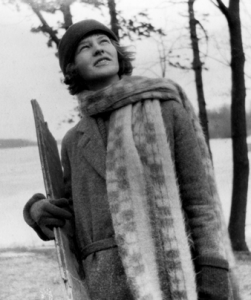 Arvid was hanged in December 1942. Mildred was given a six year sentence, but Hitler refused to endorse her punishment and she was retried and condemned on February 16, 1943. She was beheaded by guillotine. Because of her connection to possible communist sympathies and post-war McCarthyism, her story is virtually unknown in the United States. She was the only American woman who was ever put to death on the direct order of Adolf Hitler for her involvement in the resistance movement. Her last words were, “And I have loved Germany so much.” In the Cold War years after World War II, Fish-Harnack’s name and legacy were not honored in the United States, because she and her husband were believed to have been connected with Communism. For a time they were hated by both of their home countries. Once the truth came out in 1986, that changed and Mildred Fish-Harnack Day was established in Wisconsin. It takes place every year on her birthday, September 16th.
Arvid was hanged in December 1942. Mildred was given a six year sentence, but Hitler refused to endorse her punishment and she was retried and condemned on February 16, 1943. She was beheaded by guillotine. Because of her connection to possible communist sympathies and post-war McCarthyism, her story is virtually unknown in the United States. She was the only American woman who was ever put to death on the direct order of Adolf Hitler for her involvement in the resistance movement. Her last words were, “And I have loved Germany so much.” In the Cold War years after World War II, Fish-Harnack’s name and legacy were not honored in the United States, because she and her husband were believed to have been connected with Communism. For a time they were hated by both of their home countries. Once the truth came out in 1986, that changed and Mildred Fish-Harnack Day was established in Wisconsin. It takes place every year on her birthday, September 16th.

